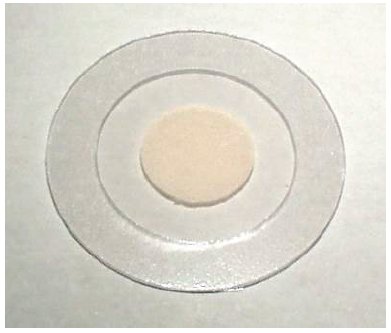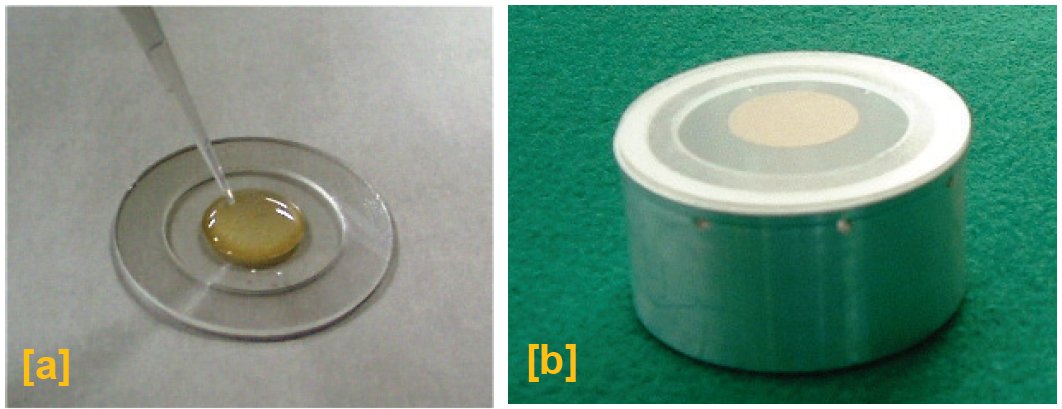Trace Element Analysis for Water Solution by Micro-droplet Method using Ultra Carry Filter Paper
Introduction
The influence on the environment of trace heavy elements such as Cd, Pb, As, Cr, Se, etc. in water is considered a serious social problem. In order to control this problem, it is essential to monitor water quality. Considering the large number of test samples required for assessment of water quality, the test method should be simple, rapid, and reproducible.
X-ray fluorescence (XRF) analysis has many positive features, such as simple sample preparation, short analysis time, and high repeatability with low human error, compared to other elemental analysis methods, such as ICP-OES or AA. XRF is the best method for the above test.
Concentrations of some trace heavy elements are too low for XRF analysis in direct liquid analysis, where water solution is poured into a liquid cell with analysis thin film. In this application note, the microdroplet method was used. An improved filter paper “Ultra Carry®” for the microdroplet method achieved an LLD lower than 0.1 ppm.
This application note demonstrates the analysis results and performance of the microdroplet method with Ultra Carry.
“Ultra Carry®," unique filter paper
Figure 1 shows a photo of Ultra Carry, a unique filter paper for the micro-droplet method. A thin paper pad is placed on very thin polymer film supported by a plastic ring.

Figure 1: Photo of Ultra Carry
Ultra Carry is designed to analyze trace elements in water solution. Since the paper pad and the film are very thin, the background observed during measurement is very low, which allows for an excellent peak-to-background ratio (signal/noise). The paper pad contains a reagent that captures water on the pad, which enables a drop of up to 500 μL at a time. After drying, the specimen is measured under vacuum.
he above features result in very low LLD, lower than 0.1 ppm, or ppb level for most of heavy elements. Table 1 shows typical LLD for water solution using Ultra Carry.
Since the specimen is measured under vacuum, boron and fluorine in water solution also can be analyzed.
Table 1: Typical LLD for water solution using Ultra Carry
| Element | LLD (ppb) | Element | LLD (ppb) |
| B | 30 ppm* | Zn | 18 |
| F | 1 ppm* | As | 16 |
| Na | 76 | Se | 24 |
| P | 56 | Sr | 25 |
| K | 12 | Mo | 27 |
| V | 34 | Ag | 152 |
| Cr | 26 | Cd | 182 |
| Mn | 16 | Sn | 40 |
| Fe | 18 | Sb | 43 |
| Co | 17 | Ba | 105 |
| Ni | 20 | Tl | 81 |
| Cu | 19 | Pb | 76 |
Counting time: 100 seconds for each element
*For only B and F, the unit is ppm.
Sample and sample preparation
A standard solution “SPEX LPC Standard 1” was used for the demonstration.
On an Ultra Carry, 500 μL of the standard solution was dropped (Figure 2 [a]) and dried overnight. The dried Ultra Carry was placed on a backscatter elimination cup made of aluminum (Figure 2 [b]) and then set into the sample holder of ZSX Primus IV.
Since Ultra Carry is very thin, backscatter from the inside of the sample holder passes through Ultra Carry and is observed. The backscatter elimination cup blocks backscatter from the sample holder.
 Figure 2: Sample preparation for Ultra Carry
Figure 2: Sample preparation for Ultra Carry
[a] Drop 500 μL of the solution on the center (paper pad) of Ultra Carry
[b] After drying, place the Ultra Carry on the backscatter elimination cup (aluminum).
Instrument
The ZSX Primus IV, ZSX Primus IVi and ZSX Primus III NEXT are floor-standing sequential wavelength dispersive X-ray fluorescence (WDXRF) spectrometers, which have high spectral resolution and high sensitivity to light to heavy elements. The instruments are designed to provide reliable analysis results and their flexibility provides versatility for a wide range of applications.
These spectrometers are equipped with a Rh target X-ray tube and the maximum tube power is 4 kW for ZSX Primus IV / Primus IVi and 3 kW for ZSX Primus III NEXT, respectively. Up to 10 analyzing crystals can cover from beryllium to uranium.
The instruments also have a built-in intelligent auto sample changer (ASC). The ASC is upgradable to 48 samples for ZSX Primus III NEXT, 48 and 96 samples for ZSX Primus IV and 60 samples for ZSX Primus IVi. Instrument control software provides inexperienced users with easy-to-use operation. The flowbar system fully supports setting up of qualitative and quantitative analysis. The standardless analysis program “SQX” can be used to quickly determine which elements and how much of each element is contained in an unknown sample without the need to prepare suitable reference materials.
Measurement
The ZSX Primus IV was used for this measurement. Sequential scan analysis from fluorine to uranium was performed followed by semi-quantitative analysis (SQX).
In SQX analysis, a qualitative scan is run, and the detected elements are then quantified by the fundamental parameter (FP) method without the use of reference standard samples. In the quantifying process, a sensitivity library is used that has the FP sensitivities for all elements that can be analyzed by XRF. The sensitivity library has been calibrated using pure metals and reagents.
SQX has a fixed angle measurement function. Using this function, the X-ray intensity is collected at a fixed two-theta angle for a user-specified time, usually much longer than the time for a step in scanning; therefore, precision is improved and superior results can be obtained for trace element analysis. In this application note, the fixed angle measurement was applied for each trace element.
Sequential qualitative scan and semi-quantitative FP calculation are programmed and executed in successive order.
Results
SQX results for the standard solution “SPEX LPC Standard 1” using Ultra Carry are listed in Table 2, along with the reference standard values.
Table 2 shows that the SQX results are in good agreement with the reference values.
The SQX analysis program has an “Automatic theoretical overlap correction” that automatically corrects for the influence of overlap of element lines. It is not necessary to manually separate overlapping peaks. In this analysis, As-Kα, Na-Kα, and P-Kα are overlapped by Pb-Lα, Zn-Lβ1, and Mo-LL respectively. For As, Na and P, excellent analysis results were obtained without any manual handling of the data.
Table 2: SQX analysis result (unit: ppm)
| Element | SQX result | Standard value | Element | SQX result | Standard value |
| Na | 18 | 20 | As | 21 | 20 |
| P | 72 | 100 | Se | 19 | 20 |
| K | 92 | 100 | Sr | 20 | 20 |
| V | 18 | 20 | Mo | 19 | 20 |
| Cr | 20 | 20 | Ag | 3 | 5 |
| Mn | 21 | 20 | Cd | 20 | 20 |
| Fe | 20 | 20 | Sn | 18 | 20 |
| Co | 20 | 20 | Sb | 22 | 20 |
| Ni | 21 | 20 | Ba | 18 | 20 |
| Cu | 19 | 20 | Tl | 20 | 20 |
| Zn | 19 | 20 | Pb | 18 | 20 |
Conclusions
A unique filter paper, Ultra Carry, enables analysis of trace elements lower than 0.1 ppm, or at ppb level, in water solution. Since sample preparation is very simple and easy, it is possible to reduce analytical error derived from sample handling and also to shorten the total analysis time.
A water solution sample, typically 500 μL, is dropped onto Ultra Carry and then dried; therefore, a specimen can be measured under vacuum. Using Ultra Carry, it is possible to analyze from boron to uranium, and no helium gas is required.
Ultra Carry, a thin paper pad on very thin polymer film, gives excellent peak-to-background ratio (signal/noise), which achieves LLDs lower than 0.1 ppm, or at ppb level.
A standardless analysis program, SQX, for water solutions using Ultra Carry was demonstrated, which shows that this analysis method allows excellent results for trace elements in water solution.

Contact Us
Whether you're interested in getting a quote, want a demo, need technical support, or simply have a question, we're here to help.
